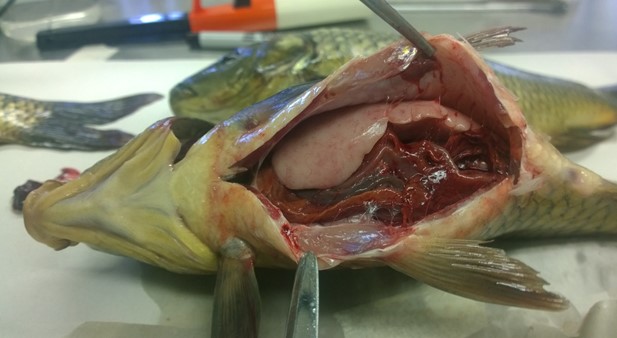Características de replicación y supervivencia del virus de viremia primaveral de la carpa (SVCV) aislado en México
Características de replicación y supervivencia del virus de viremia primaveral de la carpa (SVCV) aislado en México Replication characteristics of SVCV isolated in Mexico

Show authors biography
Objective. To perform the isolation of spring viraemia of carp virus (SVCV) in common carp (Cyprinus carpio) and evaluate its growth in different cell types and viral survival at different temperatures. Materials and methods. Ten carps of between 400-500 grams of a lagoon in central Mexico were processed for diagnosis of SVCV by isolation in cell culture and by RT-PCR. The virus obtained was inoculated into EPC, BF-2, CHSE-214 and RTG-2 cells to determine differences in virus growth; the survival of virus stored at room temperature (TA 20-25 °C), refrigeration (REF 4° C) and freezing (CONG -80 °C) up to eleven months was also evaluated. Internal organ samples were processed for histological analysis. Results. The fish analyzed did not show external signs suggestive of disease but internally and histopathologically lesions suggestive of systemic infection were observed. SVCV was isolated in EPC and BF-2 cells, and confirmed by semi-nested RT-PCR. SVCV only induced CPE in EPC and BF-2 cells, and was negative in RTG-2 and CHSE-214. The virus conserved at TA lost viability after four months post-infection (mpi), being total at six mpi; while REF and CONG were stable during the eleven months. Conclusions. Subclinical SVCV infection was confirmed in carp that presented histological lesions associated with this infection; SVCV only caused CPE in EPC and BF-2 cells; and the virus kept in refrigeration and at -80 °C retained its viability up to eleven months; while TA was lost in six months.
Article visits 1930 | PDF visits























